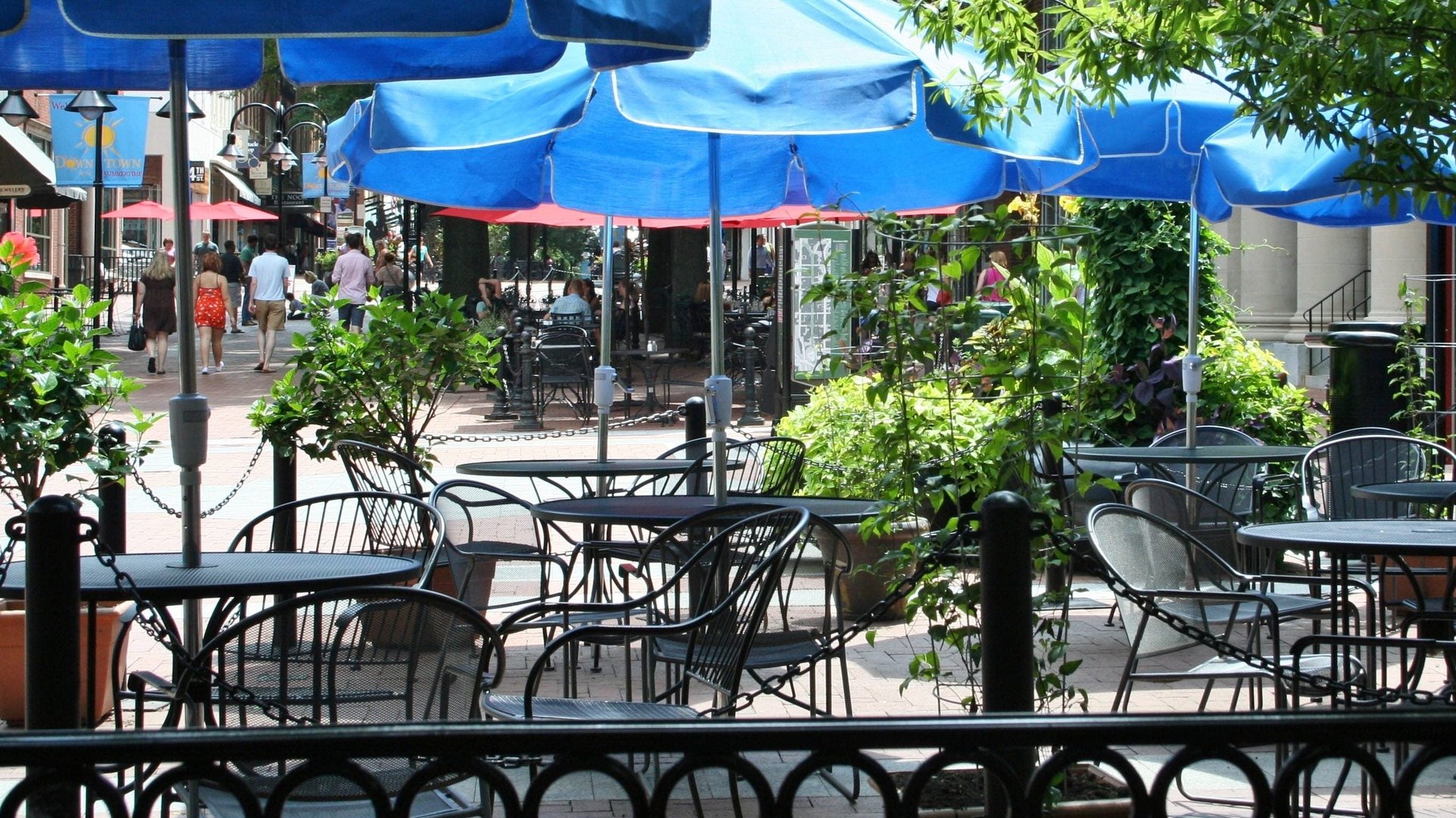The rules tweak that could save restaurants from coronavirus ruin
Al fresco dining is about to make a comeback.


Al fresco dining is about to make a comeback.
In a bid to reopen their economies while respecting physical distancing guidelines to avoid a scary second wave of Covid-19 infections, city officials are having to get creative. Vilnius, the capital of Lithuania, announced this week that it would turn its public spaces into vast open-air cafés to give bars and restaurants a chance to reopen while respecting public health rules.
The country—which has reported 1,385 cases of Covid-19 and 45 deaths so far—started to lift lockdown restrictions this week, with a twist: Everyone must wear a mask, shops must limit themselves to one customers at a time, and tables in bars, cafés, and restaurants must be at least two meters (6.5 feet) apart. But for small establishments, that’s not possible. So, city officials have said they can apply for a permit to set up their tables and chairs in 18 public spaces, including Vilnius’ Cathedral Square. The city says that 162 small businesses have already applied.
Lithuania is not the only country to turn to expanded open-air dining as a possible solution for the post-lockdown economy. Officials in New York City, Philadelphia, and some counties in Florida are exploring the possibility too. The rationale behind these moves is that the new coronavirus, SARS-CoV-2, appears to spread less readily when people are far apart outside than it does in cramped indoor spaces. The key, though, is to avoid over-crowding; people should be at least six feet apart at all times, and that’s harder to do in urban areas, or in cities like Vilnius with tiny winding streets.
There’s an economic rationale to this move, too. The hospitality industry has been devastated by this pandemic (paywall). Many restaurants, bars, and cafés have already gone under, and some are asking whether the industry will ever recover. If they don’t reopen soon, the answer to that question will be a resounding “no.”
There are other creative ideas floating around for how to better utilize public spaces in a post-lockdown world. Vilnius has allowed a drive-in movie theatre to open on an unused airport tarmac. San Francisco temporarily turned public golf courses into a public parks for social-distance recreation. New York mayor Bill de Blasio said he would restrict at least 40 miles (64 km) of streets to pedestrians and cyclists by the end of this month, with a goal of making that 100. The idea is to give urban dwellers ample room to be outside safely. (Luckily, it’s spring.)
Experts say these could be the first signs that cities are going to come out of this pandemic greener and more humane than they were before. Paul Chatterton, an urbanism professor at the University of Leeds in the UK, recently wrote as much in an article in The Conversation titled, “We’re in a real-time laboratory of a more sustainable urban future.” Our highly globalized and over-packed cities, he writes, promote waste, exploitation, and inequality, and “can quickly turn a localized disease into a pandemic.” Covid-19 has exposed our cities’ problems for all the world to see. The question is, what will we do about it?